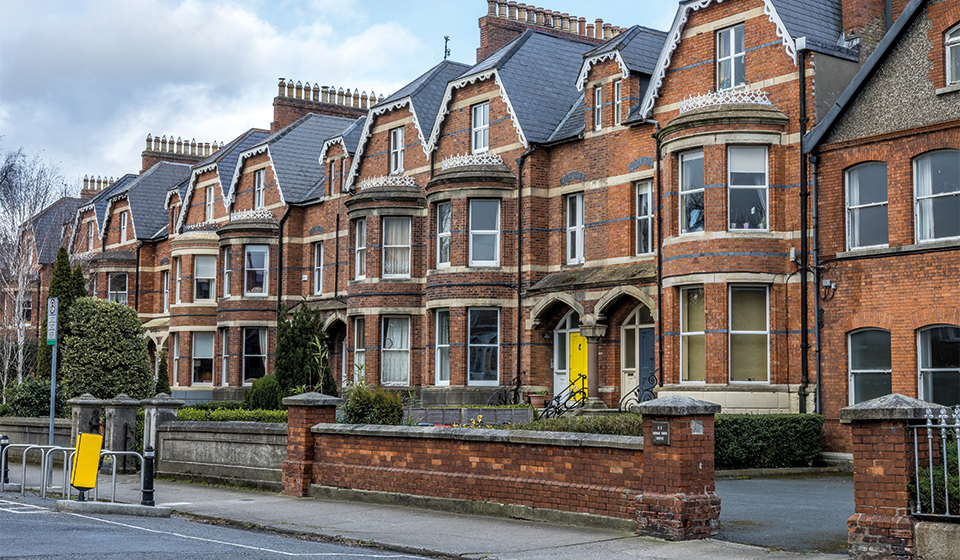
Maximising Rental Yields Through Smart HMO Design.
For inquiries or to request a quote, please fill out the form below and our team will get in touch with you shortly.
The UK rental market has grown rapidly in recent years, and one of the most profitable strategies for landlords and property investors is the HMO conversion. A house of multiple occupancy (HMO) allows several tenants to rent rooms within the same property while sharing common facilities such as the kitchen, bathroom, or living areas. By choosing to convert to HMO, landlords often benefit from higher rental yields, reduced void periods, and a stronger return on investment compared to traditional buy-to-let models.
In this guide, we’ll explore what an HMO conversion is, the benefits it offers, the process involved, and key legal requirements every landlord should know.

An HMO conversion involves transforming a standard residential property into a house of multiple occupancy. This means the property is designed to accommodate three or more unrelated tenants who live together but have their tenancy agreements.
Examples of an HMO housing setup include
HMOs are popular among tenants because they provide affordable housing in expensive areas, and they’re attractive to landlords due to the increased rental income. pulvinar dapibus leo.
An HMO conversion involves transforming a standard residential property into a house of multiple occupancy. This means the property is designed to accommodate three or more unrelated tenants who live together but have their tenancy agreements.
Examples of an HMO housing setup include:
HMOs are popular among tenants because they provide affordable housing in expensive areas, and they’re attractive to landlords due to the increased rental income.
For many landlords, deciding to convert to an HMO is a smart financial move. Unlike renting a whole property to a single household, renting out rooms individually can generate significantly higher monthly income.
Higher Rental Yields – More tenants mean more rent per property.
Reduced Risk of Empty Periods – Even if one room is vacant, income from other tenants continues.
Growing Demand for Shared Housing – The need for affordable housing makes HMO housing an attractive option for young professionals and students.
Flexibility – HMOs can often be adapted to different tenant groups, from students to working professionals.
For many landlords, deciding to convert to an HMO is a smart financial move. Unlike renting a whole property to a single household, renting out rooms individually can generate significantly higher monthly income.
Flexibility – HMOs can often be adapted to different tenant groups, from students to working professionals.
The process of converting a property into an HMO requires careful planning and professional guidance. Below are the main stages involved:
Before starting, landlords should check whether the property is suitable for an HMO conversion. Key considerations include location, size, demand for shared housing, and access to public transport.
Depending on the size of your converted house, you may need planning permission. Large HMOs, typically defined as five or more tenants, require a mandatory HMO licence from the local council. Smaller HMOs may still need a licence under additional local authority rules.
An effective layout is crucial for a successful HMO. Each tenant must have enough private space, and the communal areas must meet minimum size standards. Some landlords choose to add en-suite bathrooms to increase rent potential.
Safety and compliance are vital. A house of multiple occupancy must meet strict fire safety standards, including fire doors, alarms, and escape routes. Ventilation, waste disposal, and heating systems also need to comply with regulations.
Once permissions are in place, the property is renovated to meet HMO standards. This could include creating additional bedrooms, upgrading bathrooms, and improving shared kitchens.
Finally, the local authority inspects the property to ensure it meets requirements before issuing an HMO licence.
The cost of converting a standard property into a house of multiple occupancy varies depending on its size, condition, and the level of refurbishment needed. On average, landlords should budget for:
While the upfront investment can be significant, the long-term rental returns from an HMO housing project usually outweigh the initial expenses.

The cost of converting a standard property into a house of multiple occupancy varies depending on its size, condition, and the level of refurbishment needed. On average, landlords should budget for:
While the upfront investment can be significant, the long-term rental returns from an HMO housing project usually outweigh the initial expenses.
Running a converted house as an HMO comes with legal responsibilities. Failure to comply can result in heavy fines or licence revocation. Key requirements include:
Room Sizes – Each bedroom must meet minimum size requirements as set by law.
Research Local Demand – Ensure there is a strong tenant base, such as students or young professionals, in the area.
Work with Experts – Use experienced architects, builders, and HMO consultants to avoid costly mistakes.
Maximise Space – Consider loft or garage conversions to increase rentable rooms.
Offer Quality – Modern, well-furnished properties attract better tenants and command higher rents.
Stay Compliant – Always keep up-to-date with changing regulations in the private rental sector.
Running a converted house as an HMO comes with legal responsibilities. Failure to comply can result in heavy fines or licence revocation. Key requirements include:
Room Sizes – Each bedroom must meet minimum size requirements as set by law.
Stay Compliant – Always keep up-to-date with changing regulations in the private rental sector.

In many UK cities, housing affordability is a growing challenge, which makes HMO housing a sustainable solution. A converted house provides affordable accommodation for tenants while delivering excellent rental returns for landlords. By choosing to convert to an HMO, investors can diversify their property portfolio and protect themselves against market fluctuations.
In many UK cities, housing affordability is a growing challenge, which makes HMO housing a sustainable solution. A converted house provides affordable accommodation for tenants while delivering excellent rental returns for landlords. By choosing to convert to an HMO, investors can diversify their property portfolio and protect themselves against market fluctuations.
An HMO conversion is one of the most profitable property strategies available to landlords today. By turning a single dwelling into a house of multiple occupancy, you can maximise rental yields, reduce risk, and meet the increasing demand for affordable housing.
However, success depends on proper planning, professional design, and strict compliance with legal requirements. Whether you are a first-time landlord or an experienced property investor, working with HMO specialists can make the process smooth, efficient, and profitable.
If you are ready to convert to HMO, now is the perfect time to take advantage of growing tenant demand and secure long-term financial rewards from your investment.

With 15+ years of experience, we specialize in loft conversions, roofing, and garden rooms. As a family business, we focus on quality, clear communication, and client satisfaction.